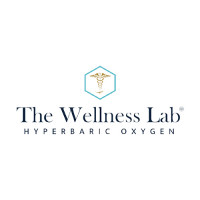The Benefits of Hyperbaric Oxygen Therapy After Surgery

Strong 8k brings an ultra-HD IPTV experience to your living room and your pocket.
Recovering from surgery can be a challenging process, often requiring rest, medication, and sometimes additional therapies to promote healing. One such therapy that has gained attention in recent years is Hyperbaric Oxygen Therapy (HBOT). This treatment involves breathing pure oxygen in a pressurized chamber, which enhances the body’s natural healing processes. Research suggests that Hyperbaric Oxygen Therapy after surgery can significantly improve recovery times, reduce complications, and enhance tissue repair. In this article, we’ll explore how HBOT works, its benefits, and why it’s becoming a popular post-surgical treatment.
How Does Hyperbaric Oxygen Therapy Work?
Hyperbaric Oxygen Therapy involves sitting or lying in a specialized chamber where the air pressure is increased to two or three times higher than normal. Under these conditions, the lungs can absorb much more oxygen than they would at normal air pressure. This oxygen-rich blood is then circulated throughout the body, promoting faster healing by:
1. Reducing inflammation – High oxygen levels help decrease swelling and inflammation, common after surgical procedures.
2. Stimulating new blood vessel growth – HBOT encourages angiogenesis, which improves blood flow to injured tissues.
3. Enhancing white blood cell activity – Oxygen boosts the immune system, helping to fight infections that may arise post-surgery.
4. Accelerating tissue repair – Increased oxygen levels support collagen production and cell regeneration.
Given these benefits, it’s no surprise that many healthcare professionals recommend Hyperbaric Oxygen Therapy after surgery, particularly for complex or high-risk procedures.
Key Benefits of HBOT After Surgery
1. Faster Wound Healing: One of the most significant advantages of Hyperbaric Oxygen Therapy after surgery is its ability to speed up wound healing. Surgical incisions, especially in cases like plastic surgery, orthopedic procedures, or post-traumatic repairs, require optimal conditions to heal properly. HBOT ensures that oxygen reaches damaged tissues more efficiently, reducing recovery time and minimizing scarring.
2. Reduced Risk of Infection: Post-surgical infections are a major concern, as they can delay healing and lead to further complications. Because HBOT enhances oxygen delivery to tissues, it creates an environment where harmful bacteria struggle to survive while boosting the body’s natural defenses. Studies have shown that patients who undergo Hyperbaric Oxygen Therapy after surgery experience fewer infections compared to those who rely solely on antibiotics.
3. Improved Recovery for Complex Surgeries: Patients undergoing major surgeries—such as organ transplants, reconstructive surgeries, or spinal procedures—often face lengthy recovery periods. HBOT can be particularly beneficial in these cases by reducing swelling, preventing tissue death (necrosis), and promoting faster regeneration of bones and soft tissues. Some hospitals now incorporate HBOT as part of their standard post-operative care for high-risk patients.
4. Pain Relief and Reduced Swelling: Post-surgical pain and swelling can be debilitating, often requiring strong painkillers that come with side effects. Hyperbaric Oxygen Therapy helps by reducing inflammation naturally, which in turn decreases pain levels. Many patients report needing fewer pain medications after incorporating HBOT into their recovery plan.
Who Can Benefit from HBOT After Surgery?
While Hyperbaric Oxygen Therapy after surgery is beneficial for many patients, it is especially recommended for those undergoing:
Plastic and reconstructive surgeries (e.g., skin grafts, flap surgeries)
Orthopedic surgeries (e.g., joint replacements, fracture repairs)
Cardiovascular and vascular surgeries
Dental and maxillofacial surgeries
Surgeries involving radiation-damaged tissues (e.g., cancer patients)
However, not all patients may be suitable candidates for HBOT. Those with certain lung conditions, ear injuries, or untreated fever should consult their doctor before undergoing this therapy.
Conclusion
Hyperbaric Oxygen Therapy after surgery offers a scientifically backed method to enhance recovery, reduce complications, and improve overall healing. By increasing oxygen delivery to damaged tissues, HBOT supports faster wound closure, reduces infection risks, and alleviates pain naturally. As medical research continues to explore its full potential, more surgeons and healthcare providers are likely to integrate HBOT into post-operative care plans.
If you’re considering surgery or are currently recovering, ask your doctor whether Hyperbaric Oxygen Therapy could benefit your healing journey. With its growing reputation as a powerful recovery tool, HBOT may be the key to a smoother, faster, and healthier post-surgical experience.
Note: IndiBlogHub features both user-submitted and editorial content. We do not verify third-party contributions. Read our Disclaimer and Privacy Policyfor details.


